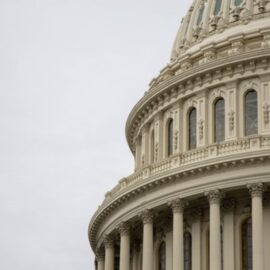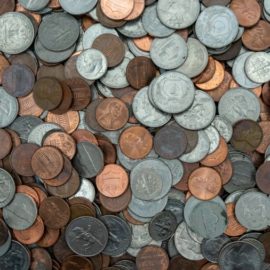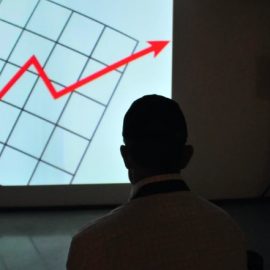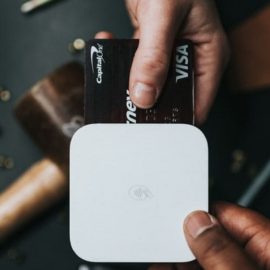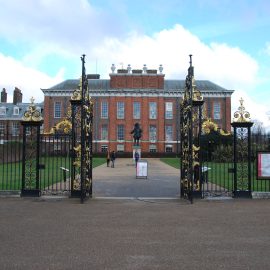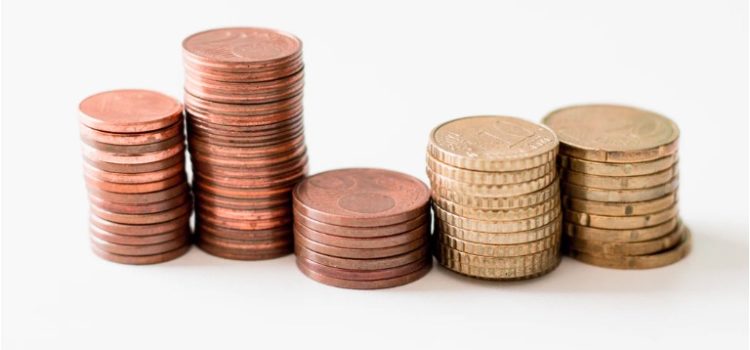
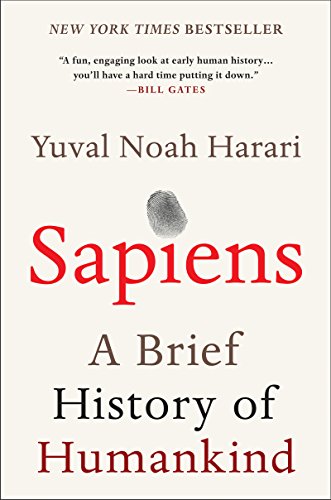
This article is an excerpt from the Shortform summary of "Sapiens: A Brief History of Humankind" by Yuval Noah Harari. Shortform has the world's best summaries of books you should be reading.
Like this article? Sign up for a free trial here .
How did the idea of money develop? What does the history of money tell us about our world today?
The history of money is one that starts with bartering and ends in the modern financial world. Money has been one of the primary factors in the creation of a global society.
We’ll cover the origin of money and how the concept evolved over centuries.
The History of Money
The first unifier of humankind is money. Money is a relatively recent invention. Hunter-gatherers didn’t have money because they found, killed, or produced everything they needed to survive. They shared what they had in their small bands in return for favors. For instance, if you gave your band member a piece of your meat, you expected her to give you some of her berries in return.
Economies of Favors and Bartering
The history of money starts with bartering, even though it doesn’t technically involve money.
Even at the start of the Agricultural Revolution, there was little need for money. Villages were self-sufficient, and what they couldn’t provide for themselves they bartered for in other villages. Although some individuals had expertise in an area like shoemaking or medicine, villages were too small for anyone to have a full-time occupation other than farming.
This changed with the growth of societies and improving transportation. In large cities where there were many people in need of your goods or services, it made sense to specialize in shoemaking, medicine, law, or carpentry, and depend on the reciprocity of your customers for your other needs. Specialization also allowed individuals to grow their expertise, which benefited the entire community.
The Limitations of an Economy of Favors and Bartering
Limitations in bartering would pave the way for the history of money. The problem with an economy of favors is that it only works when you know people well. If you provide a free service to a stranger, that stranger may never reciprocate. This makes an economy of favors ineffective for cooperation in large groups.
Bartering also poses problems:
Problem #1: Bartering forces participants to repeatedly reevaluate exchange rates for a variety of commodities.
For example, if an apple grower wants to barter his apples for a new pair of shoes, the shoemaker needs to decide how many apples to ask for, dependent on the quality of the apples in question, the relative time and cost of making the particular shoes requested, and whether or not he really wants the apples. And it doesn’t stop with apples. The shoemaker has to do these mental calculations for every other commodity he might come into contact with. If you sell your goods in a market with 100 different commodities, you need to have memorized 4,950 different exchange rates to do business with your fellow sellers and buyers. This makes bartering ineffective for large communities.
Problem #2: Bartering depends on the other person wanting what you have to offer.
If you want to trade your apples for a new pair of shoes and the only shoemaker in town doesn’t like apples, or already has enough apples, you’re out of luck.
Some communities in history, such as the Inca Empire and the Soviet Union, tried to establish a central bartering system where products and services were collected centrally and then redistributed to those who needed them. These attempts were inefficient at best, disastrous at worst.
These limits paved the way for the origin of money.
The Invention of Money
Before we dive into the history of money and the history of currency in general, we need to define it.
Money is anything that A) systematically represents the value of goods and services, and B) people are willing to use in exchange for goods and services. Money isn’t a material reality. It’s another shared myth that allows us to cooperate with strangers and in large groups.
Money has three benefits over the previous systems based on favors or bartering:
1. It can convert almost anything into almost anything else. Unlike with bartering, you can convert even abstract qualities into money. For example, a discharged soldier can exchange his bravery for knowledge when he uses his military benefits to fund his college education.
This is beneficial because, unlike when trying to trade your apples for shoes, you don’t have to worry if the shoemaker will want or need your money. Everyone wants money, and everyone wants it because everyone else wants money. This means that you can exchange money for almost anything.
2. It allows you to store your wealth conveniently. Some things that are valuable, like time, can’t be stored. Other valuable things, like avocados, go rotten quickly. Early currencies like grain were storable, but they were large and bulky, requiring lots of space, and you had to protect them from mold, rats, and water, among other dangers.
Money like coins, paper currency, and computer bits can be stored conveniently and relatively securely.
3. It’s easy to transport. Forms of wealth like grain or real estate can’t be easily transported, so you’re limited in where you can do business. On the other hand, you can carry coins and cowry shells (early and widespread forms of currency) wherever you go. The transition from bartering to money allowed communities to grow and broaden their trade networks.
Ancient Currencies
The origin of currency: Cattle, animal skins, grain, salt, beads, and cloth have all been used as currency in various cultures and time periods. While we think of coins and banknotes when we think of money, these are actually rare forms of currency today. Of the $60 trillion in the world, only $6 trillion of that sum is made up of material currency. Over 90% of all money exists only as electronic data on computer servers.
Inherent v. Noninherent Value
The oldest currency, like barley in Sumer in 3000 BC, had inherent value because it was edible. However, the most common forms of money, the currencies used because for ease of storage and transport, like shells, dollars, and silver, don’t have any inherent worth.
Take silver, for example. You can’t eat it. You can’t make clothes or shelter from it. It’s far too soft to be used in tools. What’s it good for? We use it in jewelry, luxury goods that display to others our social status, but it has no value beyond its value as a status symbol. It’s valuable because we all believe it’s valuable.
A System of Mutual Trust
So, why would anyone trade a bag of rice, something that has inherent value as a source of nutrition, for something as useless as a chunk of soft metal, a shell, or some pieces of green paper? Why do we place so much importance on them? This is key to understanding the history of money.
Because we trust it other people value it too. Trust is the foundation of our economic system. You believe that the piece of colored paper that is the dollar bill has value because your neighbor believes it has value. And your neighbor believes it has value because you believe it has value. And you both believe it has value because your government believes it has value and demonstrates this by requiring you to pay your taxes with it.
Bills and coins that bear the identification marks of the kingdom or government, modeled after the first coins made in western Anatolia in 640 BC, give the currency value because they show that an authority can guarantee them. If you trust the king, you can trust the currency with his stamp on it.
Our financial system is entirely dependent on this mutual trust. Without it, the dollar bill is just a piece of paper. This crucial element of trust binds our financial system to our political and ideological systems. When we lose trust in our leaders, the people and systems giving value to our money, we lose trust in the value of money. We momentarily stop believing in the collective fiction (and the stock market takes a plunge). This is why the history of currency is so intertwined with other aspects of society.
Money, the Great Unifier
The history of money has many positives. Money brought cultures that had little in common together. The gold coins used from Rome to India were close enough to the coins used in China that all these areas developed commercial and monetary relations. The whole world became a single monetary zone by the late modern era, leading to the creation of a single global financial and political community. Even if they didn’t speak the same language or believe in the same god, people from every corner of the globe shared the imagined belief in the value of silver and gold.
Why did they share this belief? How did they all come to believe in the same currencies when previously, some believed in cowry shells, some in barley, some in cloth, and some in beads. How did the currency become unified, the system of mutual trust in gold spreading across the globe?
It has to do with supply and demand. To understand this, let’s look at a hypothetical example. Let’s say that India and the Mediterranean start trading with each other. Indians don’t value gold. To them, it’s a relatively useless metal. It’s worthless. But in the Mediterranean, gold is a status symbol, used in jewelry and crowns to highlight the wearer’s prestige. In the Mediterranean, gold is extremely valuable.
So what happens? When trading, Mediterranean merchants notice that they can get gold for next to nothing in India, where it’s worthless. So they trade their goods for a lot of gold in India and sell the gold at a high price back in the Mediterranean. As the demand for Indian gold increases, and Indians see how badly the Mediterraneans want it, the value of gold in India goes up. Meanwhile, the Mediterranean is flooded with gold and its value drops.
With the value of gold rising in India and dropping in the Mediterranean, gold’s value in both places equalizes. Additionally, because the Mediterraneans believe in the value of gold, the Indians start to believe in its value, too. They value it because the Mediterranean merchants want it. The Indians want gold so they can trade it for what it is they actually want.
In this way, money encourages unity far more easily than religion because “whereas religion asks us to believe in something, money asks us to believe that other people believe in something.” This is much easier.
The Dark Side of Money
Money unified disparate groups and solved many of the problems faced by bartering economies, but it brought with it a host of new problems.
Problem #1: Our community and family values are often at odds with the global monetary system. We honor loyalty and morality and love. But money has led knights to switch their loyalties to the lord willing to hand over the most money; money has led Christians, cautioned against mortal sins, to murder and steal, then use their new money to buy forgiveness from their religion; and money has led parents to sell some of their children into slavery in order to feed the others. Historically, when monetary and community values clash, monetary values win.
Problem #2: Our monetary system trains us to trust it, something that’s impersonal and lacking in inherent value, over other humans. We don’t really trust strangers. We just trust the money in their hands. When strangers run out of money, we no longer trust them.
While some call money the root of all evil, it’s still the pinnacle of cooperation and toleration among people with diverse languages, beliefs, and cultures. It crossed (and weakened) the instinctual divide between “us” and “them.” It created a global system in which we’re forced to share a belief and trust one another, and it’s a system of trust that doesn’t discriminate on the grounds of race, gender, religion, or sexual orientation. There are many bright spots in the history of money.
———End of Preview———

Like what you just read? Read the rest of the world's best summary of "Sapiens" at Shortform . Learn the book's critical concepts in 20 minutes or less .
Here's what you'll find in our full Sapiens summary :
- How Sapiens outlived and outlasted the 8+ other human-like species on Earth
- The 3 critical revolutions in human existence that led to our domination of the planet
- How much of what powers our world today is really just a shared mass delusion
- What the future of humanity might look like

